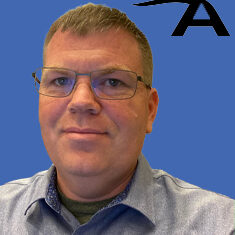The U.S. Environmental Protection Agency (EPA) warns that indoor air pollution is one of the top health risks facing Americans. According to the American Lung Association (ALA), outdoor particulate air pollution in the St. Louis metro area is high. Indoor air quality is often worse due to a lack of natural ventilation, which means there are higher concentration levels of pollutants. The good news is that air filtration systems are effective at protecting against these health risks.
What Is an Air Filtration System?
An air filtration system removes particulate matter (PM) and other dangerous substances from your air. It does this by moving air through a series of filter media stages. Air filtration won’t stop pollution from getting into your home. But if the system moves enough air, it can prevent the harmful effects.
Air filtration systems have a cubic feet-per-minute (CFM) rating. An even more useful number is air changes per hour (ACH). ACH is CFM within the context of square footage and ceiling height. An ACH of four is the general recommendation for hospitals and schools. If someone in the home has asthma or bad allergies, you should consult with a doctor to find out your optimal ACH.
What About Air Cleaners and Purifiers?
Air filters, air purifiers and air cleaners are terms that the industry often uses interchangeably. You generally can’t rely on these terms to inform you about a product. Instead, note the stages that the filtration system comprises.
Portable vs. Whole-House Air Filtration
Portable air filtration systems are more affordable initially. While effective at cleaning the air in your immediate space, they provide less coverage. You won’t benefit from them throughout your home. Whole-home systems integrate with your central HVAC to provide cleaner air throughout the home. They are more expensive to install. But they provide better value per coverage and a lower total cost.
Air Filtration Stages
The most basic of air filtration systems will have a mechanical filtration stage to remove PM. But many brands include additional stages in their systems, including:
- Prefiltration
- Activated carbon
- UV light
- Ionization
- Photocatalytic oxidation
Prefiltration
Prefiltration is a type of mechanical filtration, but it isn’t there to trap the PM associated with health risks. Instead, it blocks larger particulates and, in doing so, extends the life of your other filter media. Prefilters are generally much less expensive than the other filters and are washable in some systems.
Mechanical Filtration
PM is the most dangerous aspect of air pollution. The ALA associates it with many cardiovascular diseases, respiratory illnesses and cancers. It negatively affects people of all ages. But research shows that it’s particularly dangerous to children, elderly people and those with respiratory conditions.
To remove PM, most manufacturers opt for a high-efficiency particulate air filter. A standard HEPA filter can trap 99.97% of particles down to 0.3 microns in size. You can also choose an air filtration system that supports a medical-grade HEPA filter. These filters trap 99.99% of microns down to 0.3 and 99.97% down to 0.1 microns.
Activate Carbon Filtration
Most air filtration systems on the market have at least two stages and pair mechanical filtration with absorptive filtration. The most common filter media for this is activated carbon or charcoal. It removes odors, even smoke, and helps to make a home smell better. It also removes volatile organic compounds VOCs), gases, fumes, chemicals, ammonia and ammonium compounds.
Zeolite is an inexpensive alternative to activated carbon. Similar to carbon, it removes odors, gases and chemicals. But the effectiveness is not nearly as high. You’ll often find zeolite in cheaper products to keep costs down. Most experts recommend activated carbon over zeolite.
Ultraviolet Radiation
Ultraviolet light has three components: UV-A, UV-B and UV-C. UV-C is a germicidal light and can neutralize viruses, bacteria, mold/fungal spores and dust mite eggs. It’s so effective in this regard that most U.S. hospitals use it as a surface disinfectant.
One of the issues with UV filtration is that it’s more effective at a lower ACH. There are whole-home air filtration systems with an integrated UV-C stage. But if you want a higher ACH, it’s often better to install UV lamps in the ductwork as an add-on.
Ionization
An ionizer in an air filtration system sends out a continuous flow of negatively charged ions. The process is a corona discharge. Negative ions are oxygen molecules with an extra electron. They bind to dust and other allergens and make them too heavy to remain airborne. They’re not as effective as HEPA filtration. There remains debate in the medical space about potential health risks associated with ionization. But they do have the advantage of being quiet due to a lack of motors or fans.
Photocatalytic Oxidation (PCO)
PCO destroys microbes, VOCs and chemically active compounds. It does this through oxidation, which turns contaminants into harmless carbon dioxide. It’s also a very efficient form of filtration. It does require UV radiation. It’s a common add-on to UV stages and UV lamps. When paired with UV lamps, some manufacturers refer to the product as an air scrubber.
Ozone Generators and Electrostatic Precipitators
Two notable types of filtration are available at retail but most experts advise against. Ozone is effective at neutralizing smoke and microbes. However, federal limitations make the ozone generators available at retail useless. Electrostatic precipitators use electricity to control PM. It provides marginal improvements over HEPA filtration and often costs much more in the short and long term.
Dehumidification and Humidification Systems
There are combination units that include an air purifier with a dehumidifier or a humidifier. You can also add a whole-house dehumidifier or humidifier to your IAQ and HVAC systems. Maintaining an optimal relative humidity (RH) is notable for IAQ on many fronts. With less water vapor, air can hold less PM and other contaminants. A lower RH makes a home less hospitable to pathogens, mold spores, dust mites and so on. In the winter, a higher RH leads to better respiratory health.
Do You Need To Clean an Air Filtration System?
You need to change the filter media as needed. Failure to do so not only results in poor IAQ but decreases energy efficiency and equipment lifespan. You should also sanitize your equipment. With portable units, it may be necessary to do this every two weeks or so. Manufacturers often design whole-home systems to be on either a six- or 12-month schedule. This makes it convenient to have a technician clean the system and replace the filter media during that HVAC tune-up.
Local IAQ Experts in the Greater St. Louis Area
If you’d like to install a whole-home air filtration system, Agers Heating & Air Conditioning is here to help. We’re a family-owned and -operated company that has served St. Louis and the surrounding areas for more than 15 years. Our NATE-certified technicians also install, maintain and repair all manner of ducted and ductless heating and cooling equipment. Book your appointment online, or call us with any questions about our indoor air quality services.




